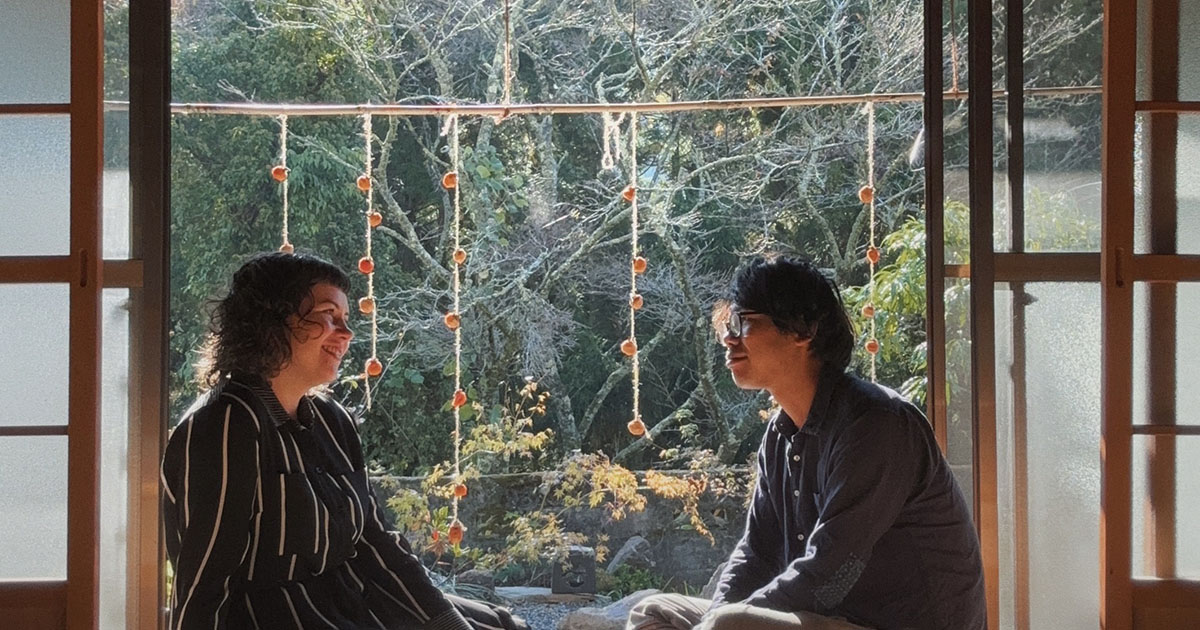How it started
In 2019, Bethany, a Canadian-born interior designer, experienced burnout from her New York City office job, aggravated by lengthy commutes and exorbitant rent. Feeling at a dead-end but with little time left in the day to ponder options, she pursued a sabbatical by accepting a job as an English teacher in Japan.
Meanwhile, Koichi, a Tokyo-born landscaper in urban Chiba, felt constrained by his work. He loved all things plant-related. Upon learning about Japan’s kyoryokutai program, designed to revitalize rural areas, he began to envision a life intertwining Japanese garden design, chemical-free permaculture farming, bonsai, ikebana, and a slower pace of living.
In 2021, both independently moved to Ehime prefecture. As outsiders in their own way, they found common ground, united by Bethany's background as an interior designer and Koichi's expertise as a garden designer. Their connection quickly deepened, leading to their marriage in 2023.

House hunting in Japan
Planning a life together meant finding a house that would accommodate their lifestyle goals and work. While many people might approach house hunting with a wish list of amenities and features, the couple remained flexible in their house requirements. Seeking outdoor space for farming on a limited budget, Koichi's local network played a crucial role in their home search, as their ideal home wasn't listed online.

“Our home wasn’t listed online at all. It would have been impossible to find and even more impossible to negotiate without someone local.”
Intentional lifestyle in the Japanese countryside
Their home, nestled on approximately half a hectare of terraced land on a mountainside, lacks easy access to urban amenities. However, this is by design, as their vision centers on an intentional lifestyle combining sustainable, small-scale agriculture, and non-material priorities.
Bethany has been doing her best to repurpose the objects and materials already on the site. She has repurposed an antique tansu (furniture chest) into kitchen cabinets and turned old rusty siding into raised garden beds.

Before & After photos of the kitchen
Koichi has been busy cultivating the land, recently yielding a chemical-free harvest of kiwi fruits. Beyond farming, he provides landscaping services locally, sells produce online, and operates a mobile market from the back of his kei truck.

Lessons from Japanese architecture
Bethany previously lived in a Showa-era akiya during her short time teaching English. She looks forward to acting as the next caretaker for this 100 year old kominka on her and Koichi’s new property
“As an interior designer, I’m used to making demands from spaces. I decide what activities happen where; how a building will hold life. In a traditional house like this, it’s the other way around. The building already holds the wisdom. It is generous if we take the time to listen.”





She highlights tatami as an example, emphasizing the house's inherent elegance, minimalism, and sustainability. The couple plans to make repairs and upgrades while residing in the newer house attached to the kominka. Although the traditional komika lacks plumbing, insulation, and modern comforts, it features an irori, which is a sunken indoor fire pit for cooking. There is also a relaxing engawa (veranda) with views of a freshly designed Japanese garden. The area boasts an alarmingly magical population of summer fireflies, regional cuisine specialties including imotaki (taro nabe), and a sea of clouds mountain observation point.









